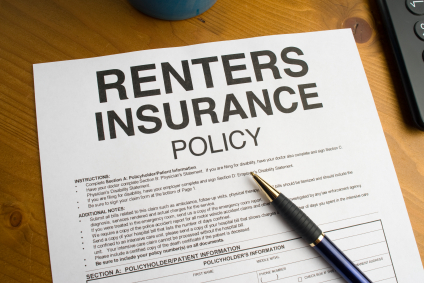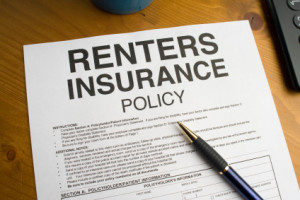
This was originally featured at Realtor Age. You can go here to see it on their website here.
Randi Glazer’s lengthy and remarkable career in the insurance industry began with a role as a property package and inland marine underwriter and has since seen her consistently excel across a variety of leadership positions and professional responsibilities. In her current role as an underwriting consultant, Randi is able to impart the wisdom she has gained through years of experience and can continue to ensure that the lessons she learned from her professional mentors will be passed on to the next generation of insurance professionals.
In addition to the responsibilities she has taken on as an underwriting consultant, Randi has also responded to the frequent demand for her insight and expertise by authoring a number of articles and books covering business and insurance-related subjects. From specific issues regarding the nuances of underwriting to the simple matter of navigating issues of office politics, Randi has addressed just about every subject imaginable through the countless articles and full-length books she has written over the years.
While her career in the insurance and underwriting profession has taken her all over the world and has included near-constant travel at various points during her professional life, Randi has always considered Long Island, New York home and currently resides just east of San Francisco in Walnut Creek. With Mount Diablo not too far from her home and constantly looming over her backyard, Randi is most likely to be found hiking the seemingly endless steps of the Iron Horse Trail or relaxing while taking in a view of the Pacific Ocean from Stinson Beach.
1. In what city/state was your first house located and approximately what year did you buy it?
I lived in Farmingdale, New York, which is about 60 miles to the east of Manhattan and within Nassau County. I bought the house in 1997, and it’s a modest-sized home with a beautiful yard in a very quiet neighborhood. It was only a half mile from the Bethpage State Golf Course where they have held the U.S. Open.
2. What was your living situation prior to buying your first house? Where/with whom/etc.?
I had always lived on Long Island, New York prior to buying my house in Farmingdale, and my last place was a single-bedroom apartment in Farmingdale neighborhood where I purchased my house. It was a great deal for the price even though it needed a lot of upgrades.
3. What motivated you to purchase your first house?
The initial motivating force was having the opportunity to take on a role in which some of my work could be done remotely, so I wanted to make sure I had a separate space for work. When I began looking in Farmingdale, New York, I knew immediately that I could find an ideal home.
4. How did you go about getting the money together to buy it?
My grandmother was generous enough to give $15,000 towards the purchase of my house and with my excellent credit rating, I was able to secure a low-interest mortgage and come up with the rest of the money for the down payment.
5. When you purchased, were you thinking of it as an investment or as a place to start a family. Please elaborate.
While I evaluated each potential property as a permanent home, I have since treated it very much like a long-term investment.
6. What are 3 things you liked most about the house?
Farmingdale is a beautiful place to live and it is more than close enough to occasionally commute into Manhattan for work. I love being so close to the beach, to Bethpage State Park and being part of a very active community.
7. Was there anything you didn’t like about it?
My only concern was that a property in Farmingdale, New York wouldn’t appreciate in value as quickly as other properties closer to or in Manhattan however, I am nonetheless content with the purchase and am more concerned with its long-term potential.
8. Did you make any improvements or major renovations to the house?
The prior owners did not put much in to the house. We upgraded everything including, heating, plumbing, installing a central air unit, re did both bathrooms, the kitchen, the basement and put 2,000 sqft of brick and a brick patio with a hot tub for the landscaping. It was a lot of work over several years, but it was well worth it.
9. Please share 1-2 of your fondest/funniest memories from living there.
I remember making my first meal in the kitchen after we completed all the renovations. I loved how much easier it was to cook and move around as opposed to how it has been. We opened up walls, vaulted the ceiling, put in a lot of overhead lighting, a skylight and I really enjoyed cooking for the first time in a long time. I felt like the house was starting to be come more of my own.
10. Do you still live there or did you sell it or renting it?
I sold my house before the housing bubble collapsed and did very well making back all the money I put into the house and then some. I really enjoyed living there.
11. What advice would you give other first time home buyers?
Expand the geographic area in which you search for a home and focus more on what it has than what it is close to. I could have never found a place like mine had I limited my search to just homes that didn’t need to be renovated.






 The phone rang and on the other end was a close friend of mine, sobbing quietly into the phone. Her new apartment had been burglarized and her brand new expensive camera was now gone forever. It’s incredibly unsettling and violating to be burglarized.
The phone rang and on the other end was a close friend of mine, sobbing quietly into the phone. Her new apartment had been burglarized and her brand new expensive camera was now gone forever. It’s incredibly unsettling and violating to be burglarized.



 In a recent report,
In a recent report, 
 A recent article in the New York Times delves into the changing trends among the younger generations and their dissociation with credit cards and the crippling debt that follows. FICO, one of the largest analytic software companies in the US, conducted a study aimed at understanding the decline of credit card usage among the ages of 18-29. They found that from 2005-2099 there was a 7% decrease in credit card purchases. The study also recognized that older generations are relying less on credit cards, but not with such drastic numbers.
A recent article in the New York Times delves into the changing trends among the younger generations and their dissociation with credit cards and the crippling debt that follows. FICO, one of the largest analytic software companies in the US, conducted a study aimed at understanding the decline of credit card usage among the ages of 18-29. They found that from 2005-2099 there was a 7% decrease in credit card purchases. The study also recognized that older generations are relying less on credit cards, but not with such drastic numbers.

